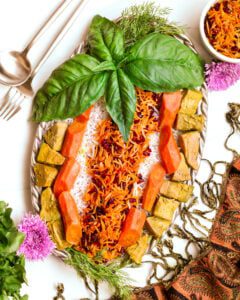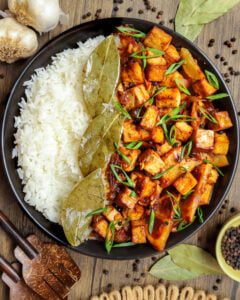BIPOC Portraits is a series in which Best of Vegan contributors Val & Mani Latifi profile one BIPOC vegan creator over the course of 16 weeks, to shed light on the unique challenges BIPOCs face in making the decision to embrace veganism. For BIPOCs, the prevailing narrative that veganism is a white-dominated movement can often mean a perceived loss of cultural identity. The hope of this profile series is to make veganism a little less lonely for BIPOCs and to give courage to vegan-curious BIPOCS out there. In the first installment of BIPOC Portraits, Val & Mani share their journey to veganism.
[The acronym BIPOC stands for Black, Indigenous, and People of Color]
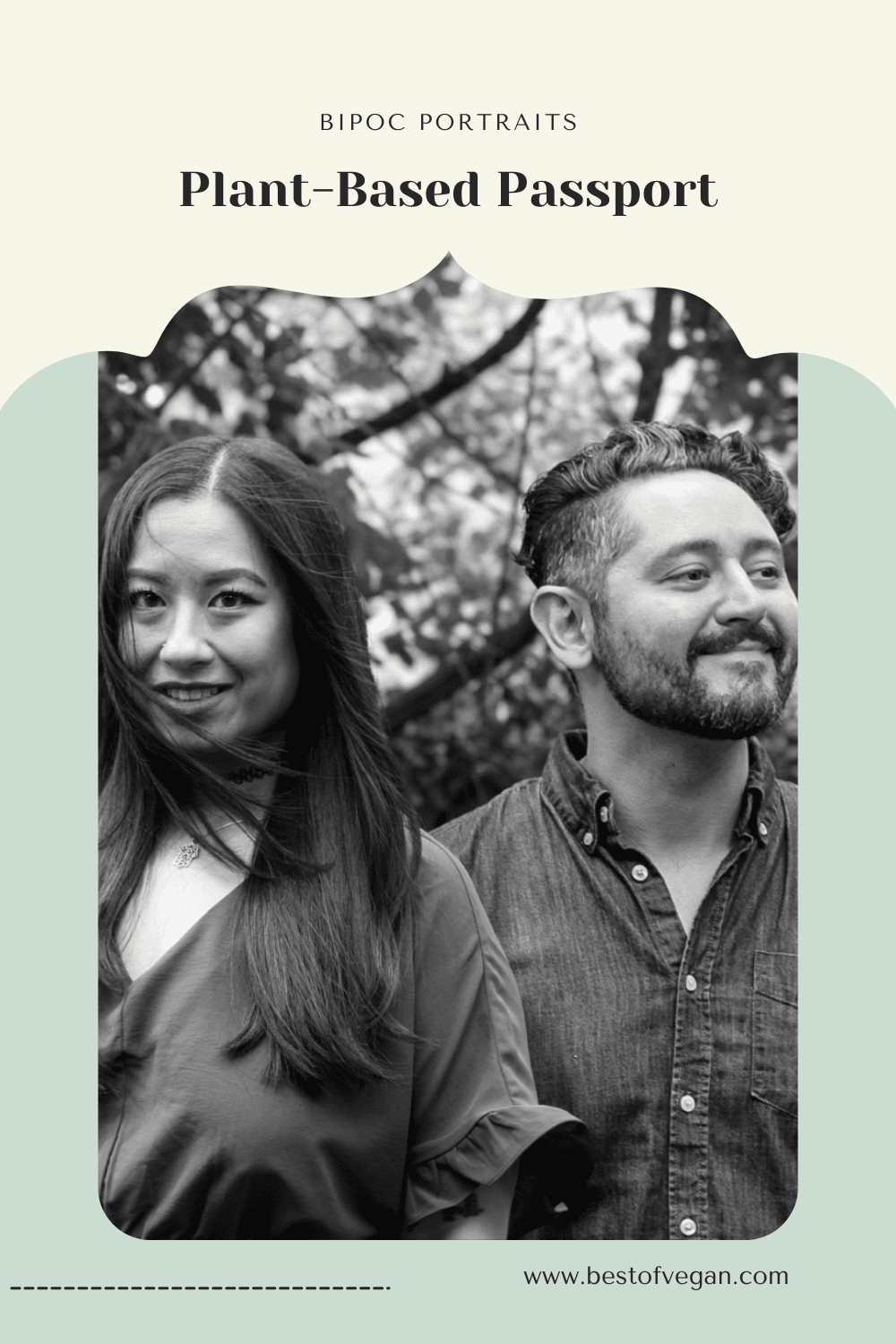

BIPOC Portraits: Plant-Based Passport
Val & Mani Latifi are married lawyers based in Houston, Texas. Val is of Filipino descent and Mani is of Persian descent. They transitioned to veganism in 2018, owing to their first rescue pug Tofu. One day it clicked for them that all animals were capable of the same love and emotion they saw in Tofu’s sweet, bulbous eyes. Other than cooking up globally-inspired vegan dishes, they enjoy traveling and reading.
When you first went vegan, did you see the vegan community as diverse? Did you see yourself as having a place in the vegan community as a BIPOC?
No. We did not perceive the vegan community to be diverse or inclusive. To us, the face of veganism was a white one. There was, and remains, a glaring lack of non-white food representation in mainstream veganism. Vegan food media, which is an extension of mainstream food media at large, exacerbates this problem. The racial reckoning at publications like Bon Appetít Magazine and The Washington Post underscores the central problem: The exclusion and undervaluing of voices of color by predominantly white gatekeepers.
No. We didn’t initially feel like we had a place in the vegan community. So we created a space for ourselves in the form of Plant-Based Passport—our Instagram account—which eventually expanded to our website, YouTube, and TikTok. Aside from cooking, travel is our other passion. Plant-Based Passport began as a virtual food diary of sorts in which we veganized food we’ve sampled all over the world, along with dishes we grew up eating.
There was, and remains, a glaring lack of non-white food representation in mainstream veganism.
To our surprise, Plant-Based Passport helped us connect with vegans of color from all corners of the globe, all making incredible food. This shifted our perspective on what vegans and vegan food can look like. And we couldn’t help but ask ourselves: Why aren’t these vegans of color more visible? Why aren’t their voices part of the mainstream vegan discourse? Why isn’t their food more celebrated?
The prevailing narrative that veganism is a white-dominated movement disservices the cause by masking the scope of its diversity. It makes veganism a scary place for vegan-curious BIPOCs out there. It is an act of bravery for all BIPOCs to make the leap to veganism, and we hope this profile series makes that leap a bit less scary. Vegan BIPOCs are in good company, we are here to stay, and we deserve a place at the table.
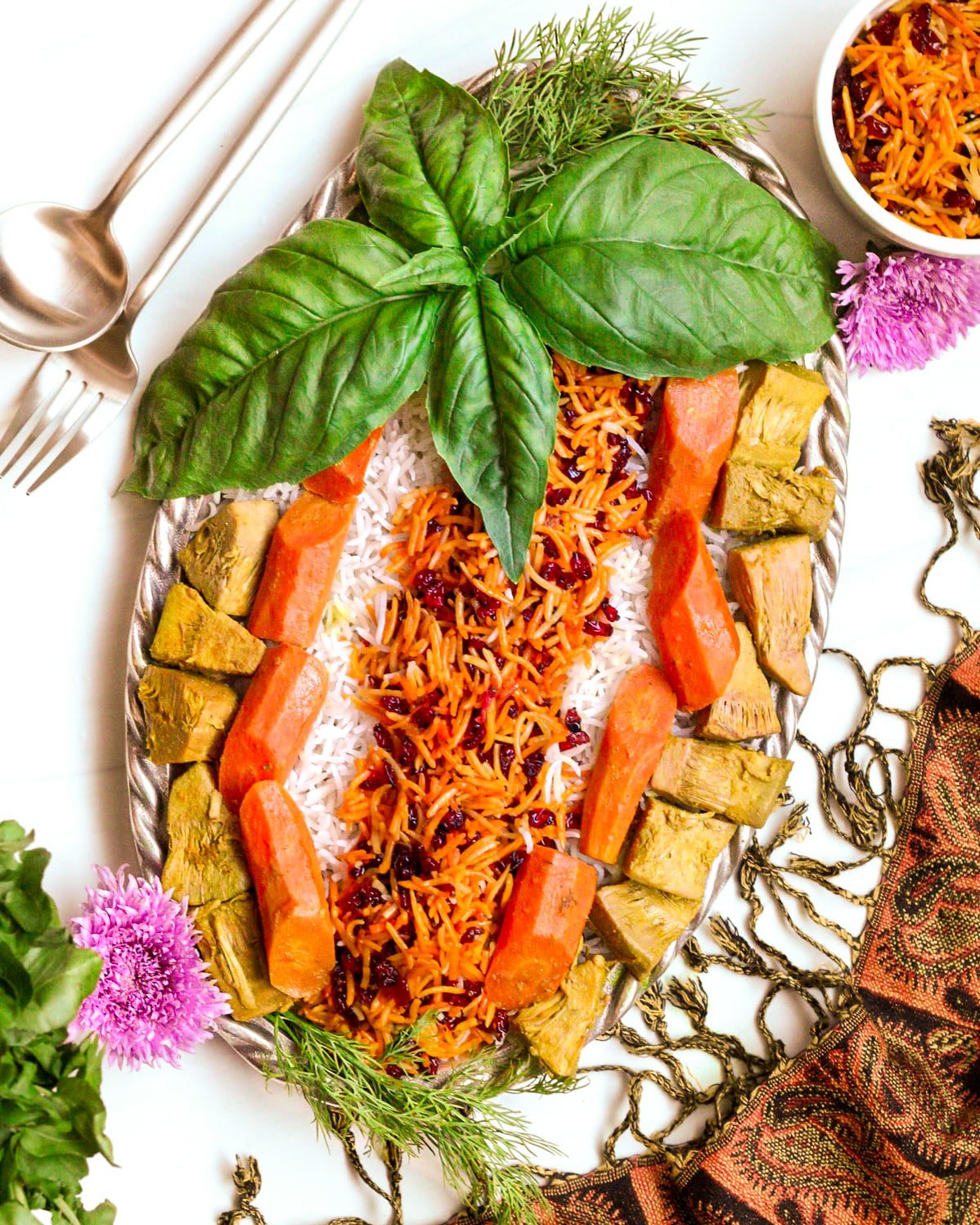

Did you have any fears or reservations about going vegan? Did you feel like you might lose part of your cultural identity in your transition to veganism?
Absolutely. Fear kept us from making the transition to veganism sooner. Val is Filipino-American and Mani is Persian-American. Like many children of immigrants, we’ve always felt caught between two worlds. We’ve had a lifelong sense that we weren’t Filipino or Persian enough—but also not American enough. Food was one of the few tangible links we had to our respective cultures. We worried that veganism would mean scrubbing ourselves of our cultural foods, in effect white-washing ourselves in a flavorless deluge of avocado toast and nourish bowls.
The prevailing narrative that veganism is a white-dominated movement disservices the cause by masking the scope of its diversity.
Did you worry about how your friends and family would react to your decision to go vegan? And how did they react?
Yes. We were especially concerned about how our parents would react. We worried that they would view the decision to go vegan as a rejection of their food and culture. Fortunately, this was not the case. They were very supportive, despite it taking them a second to fully grasp what veganism meant (no, mom, shrimp is not vegan). Once they got it, they fully committed to helping us come up with vegan iterations of their cultural foods.
We didn’t worry much about our friends. They are a very diverse, open-minded group of folks. Even though most of them are omnivores, they embraced our decision to go vegan and are always excited to try our food. We feel very fortunate to have such supportive family and friends.
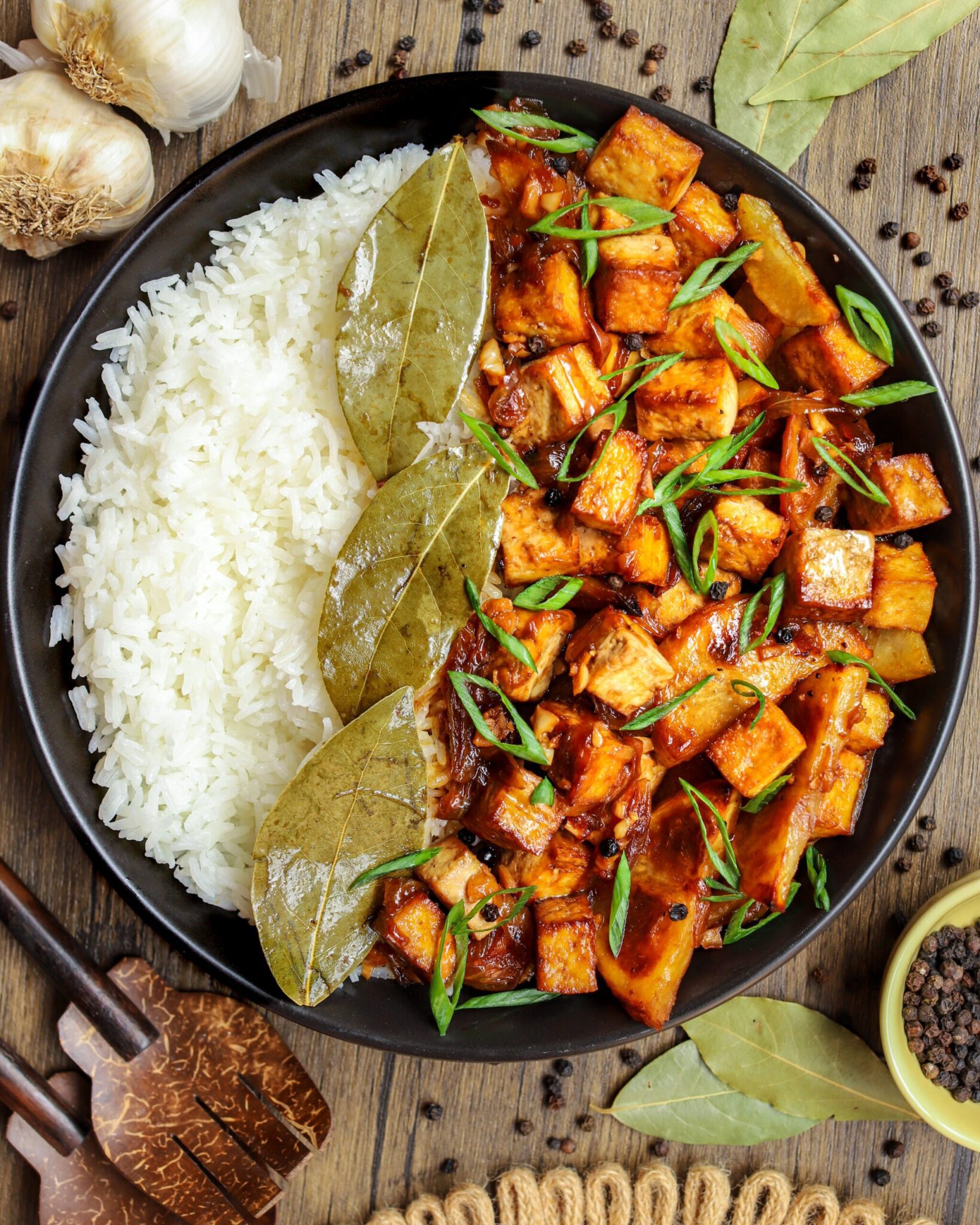

Did you have challenges finding vegan substitutes to make your cultural dishes? What substitutes did you make?
We were experienced cooks prior to embracing veganism, but going vegan meant relearning how to cook in some ways. We had to learn how to prepare unfamiliar ingredients and navigate new cooking methods. At first, we had the impression we had to use a ton of faux meat products to recreate our cultural dishes. But thankfully, that wasn’t the case! We were able to look within our own cultures for vegan substitutes, and with a little creativity, we found non-traditional stand-ins as well.
We were experienced cooks prior to embracing veganism, but going vegan meant relearning how to cook in some ways.
Both Persian and Filipino food can be meat-heavy traditionally. For some Persian dishes, like Khoresh Gheymeh (beef and split pea stew), we were able to avoid the meat substitution completely. We simply doubled the split peas in the recipe as a protein substitute. We learned that it was the spices and aromatics that made the dish delicious—not the meat. For other dishes, we use non-traditional substitutes. For example, in Zereshk Polo ba Morgh (barberry rice with chicken), we use poultry-seasoned jackfruit in place of the chicken, which mimics the texture beautifully. But for dishes like Kebab Koobideh (ground meat kabobs), the meat substitution is unavoidable; vegan ground meat, though, works wonderfully in our recipe.


As for Filipino food, we avoided the meat substitution in dishes like Chicken Afritada (tomato-based chicken and vegetable stew), by doubling the chickpeas for protein. We also lean heavily on tofu, which is a traditional protein source in Filipino cuisine. Adobong Tokwa (tofu adobo) is just as hearty and satisfying as the traditional chicken or pork versions. Additionally, fish sauce is often used in Filipino cuisine in place of table salt, and vegan fish sauce provides satisfactory amounts of both umami and stank. Soy curls are a non-traditional meat substitute we use in dishes like Bistek Tagalog (Filipino beef steak).









